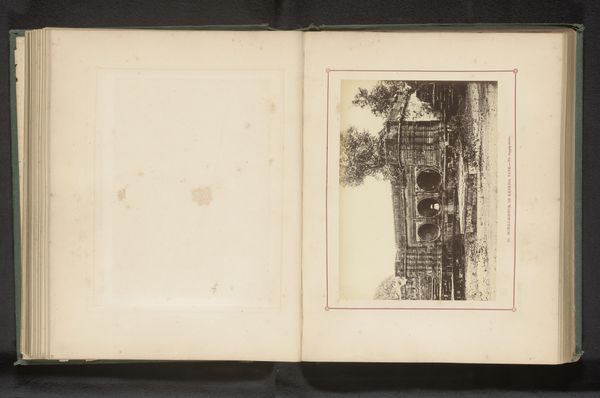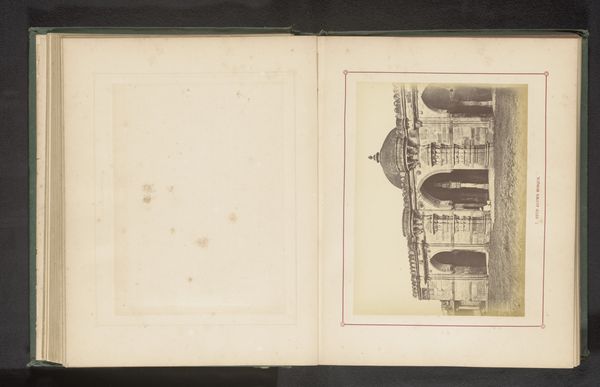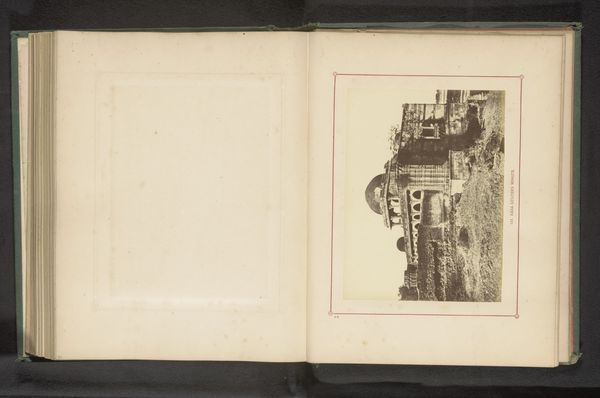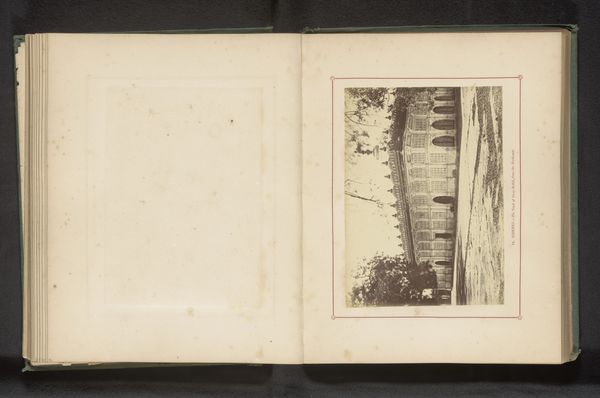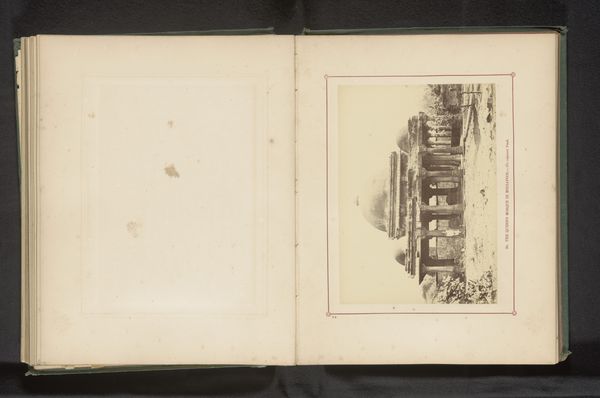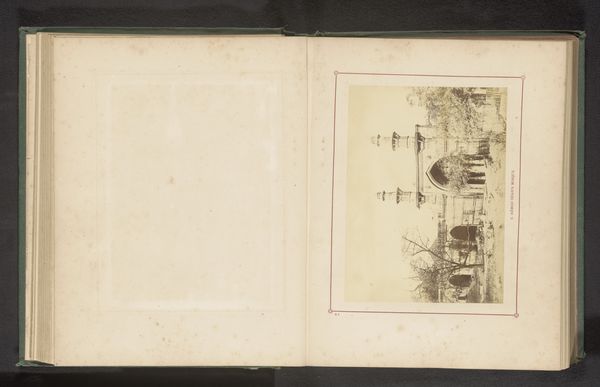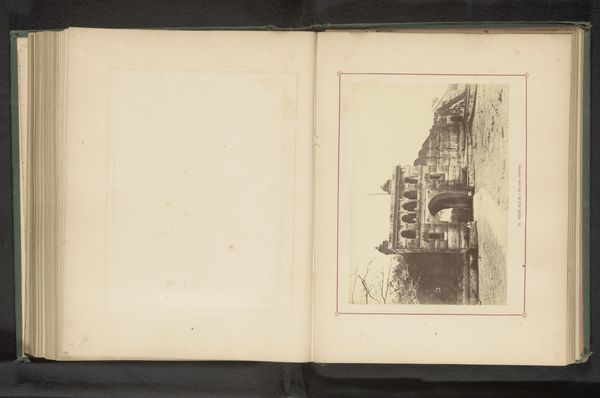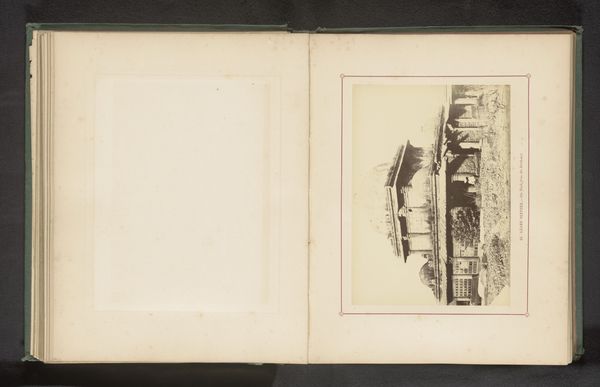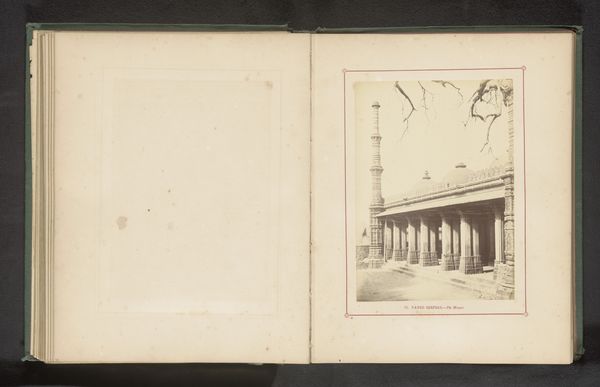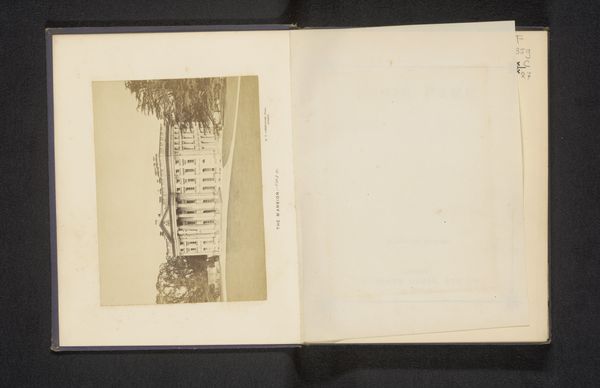
print, photography, albumen-print
# print
#
landscape
#
photography
#
orientalism
#
cityscape
#
islamic-art
#
albumen-print
Dimensions: height 135 mm, width 189 mm
Copyright: Rijks Museum: Open Domain
Curator: Here we have an albumen print, "Gezicht op een graftombe van een Shah in Ahmedabad," taken before 1866 by Thomas Biggs. It's part of a larger photographic album. Editor: It evokes such a tranquil atmosphere, almost dreamlike. The muted sepia tones contribute to a feeling of stillness, don't you think? Curator: Definitely. Biggs was a master of this photographic process, and albumen prints were especially valued for their fine detail and tonal range. He carefully manipulated the chemistry to achieve this luminosity, an aesthetic often prized by the British, seeking to display their empire through picturesque imagery. Editor: Yes, but we must also acknowledge the context of colonialism within which this photograph was created. Images like these contributed to shaping Western perceptions of the "Orient," reinforcing power dynamics between the colonizer and the colonized. Who was this Shah, what narratives might be concealed here, in order to fit imperial aesthetics? Curator: An interesting point, indeed. The act of photographing itself becomes a form of claiming and defining the space. Focusing on craft though, albumen printing involved coating paper with egg whites, then sensitizing it with silver nitrate before contact printing the negative. Biggs probably had a dedicated darkroom and a team of assistants, especially when on assignment far away from England. Editor: Exactly, those kinds of processes often overlooked when focusing on the aesthetics! Consider how these images circulated within British society, perhaps fueling fantasies of exploration and dominance, influencing both trade and cultural understanding—or rather, misunderstanding. Curator: Yes, and the choice to present it in this almost perfectly geometrical style perhaps appealed to a British sensibility—organizing the world into recognizable forms, quite different from a vernacular perspective of the space and city it captures. The materiality of photography was often deliberately chosen to be quite clean and exact. Editor: Indeed. Thinking about the labor involved also brings to light questions of class, gender, and race, which would affect which people held such specific knowledge and capabilities to perform these crafts at their time. Curator: This print makes me appreciate the labor involved. The final image also reveals how much Biggs relied on scientific knowledge and technique, even with the technology of the day. Editor: And for me, considering how photographs like this one have affected Western imaginaries, it’s so interesting to analyze their long-term legacy. Curator: Well, a final thought: perhaps examining the chemical breakdown of the print itself could unveil a completely new layer of meaning, related to material transformation. Editor: I wonder what contemporary photographers in India would make of this image, in conversation with its legacy. Food for thought!
Comments
No comments
Be the first to comment and join the conversation on the ultimate creative platform.

